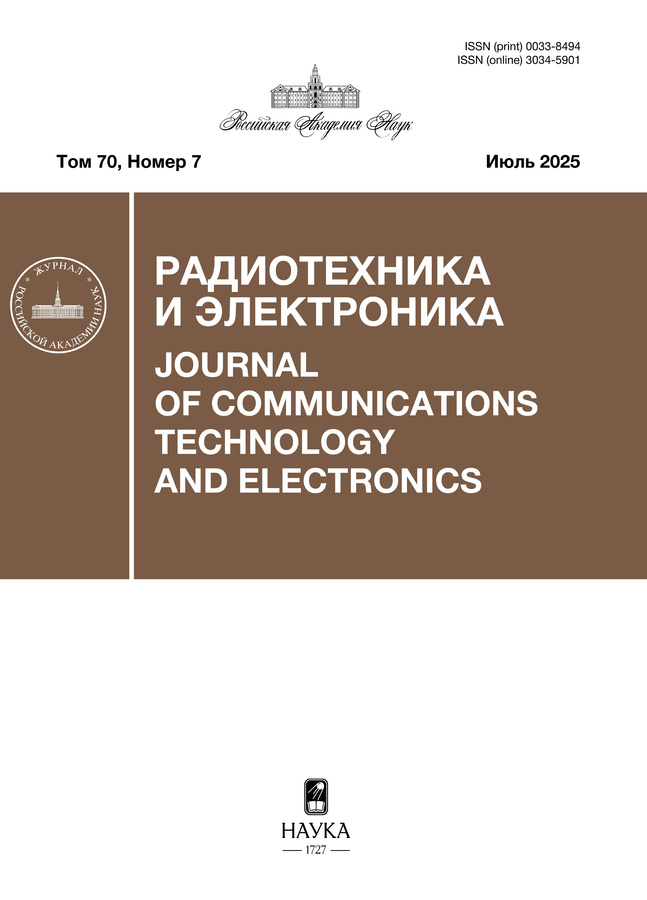Statistical model of directional fading for land-mobile satellite communication systems. Part 1
- Авторлар: Karavaev D.A.1, Glushankov E.I.1
-
Мекемелер:
- The Bonch-Bruevich Saint Petersburg State University of Telecommunications
- Шығарылым: Том 70, № 7 (2025)
- Беттер: 635-643
- Бөлім: THEORY AND METHODS OF SIGNAL PROCESSING
- URL: https://cijournal.ru/0033-8494/article/view/692007
- DOI: https://doi.org/10.7868/S3034590125070029
- ID: 692007
Дәйексөз келтіру
Аннотация
This study investigates a directional fading model for narrowbeam receiving antennas, typical of user terminals in modern satellite communication systems. Through analytical simplification, we derive an approximate version of the original model, where the power spectral density of the fading process is approximated by a Gaussian function. This approximation enables a computationally efficient synthesis method for the target application scenario. To validate the synthesized process, we compare its level-crossing statistics with theoretical predictions from a generalized reference model. Additionally, we propose a heuristic expression for a key model parameter controlling the angular spread of fading components. This expression is formulated in terms of physical parameters defining the radiation pattern of parabolic antennas, which are widely used in satellite terminals.
Авторлар туралы
D. Karavaev
The Bonch-Bruevich Saint Petersburg State University of Telecommunications
Email: d-a-karavaev@yandex.ru
Bolshevikov prosp., 22, build. 1, St. Petersburg, 193232
E. Glushankov
The Bonch-Bruevich Saint Petersburg State University of TelecommunicationsBolshevikov prosp., 22, build. 1, St. Petersburg, 193232
Әдебиет тізімі
- 3rd Generation Partnership Project (3GPP) Technical Report: TR38.811: Study on New Radio (NR) to Support Non-Terrestrial Networks, Version 15.4.0, 2020. Sophia Antipolis: 3GPP, 2020. 15 p. https://portal.3gpp.org/desktopmodules/Specifications/SpecificationDetails.aspx?specificationId=3234
- ETSI Technical Report TR102 768 V1.1.1: Digital Video Broadcasting (DVB); Guidelines for the use of EN301 790 in Mobile Scenarios, 2009. Sophia Antipolis: Europ. Standards Telecommun. Inst., 2020. 111 p. https://www.etsi.org/deliver/etsi_tr/102700_102799/102768/01.01.01_60/tr_102768v010101p.pdf
- Abdi A., Barger J.A., Kaveh M. // IEEE Trans. 2002. V. VT – 51. № 3. P. 425.
- Cid E.L., Sanchez M.G., Alejos A.V. // IEEE Trans. 2016. V. VT – 65. № 4. P. 2787.
- ITU Radio Regulatory Framework for Space Services. Geneva: Int. Telecommun. Union, 2015. 19 p. https://www.itu.int/en/ITU-R/space/snl/Documents/ITU-Space_reg.pdf
- Stüber G.L. Principles of Mobile Communication. Cham: Springer, 2017
- Baddour K.E., Beaulieu N. // IEEE Trans. 2005. V. WC – 4. № 4. P. 1650.
- Шахтарин Б.И. Случайные процессы в радиотехнике. М.: Радио и связь, 2000.
- Abdi A., Wills K., Barger H.A. et al. // Vehicular Technology Conf. Fall 2000. IEEE VTS Fall VTC2000. 52nd Vehicular Technology Conf. Boston. 24–28 Sept. N. Y.: IEEE, 2000. V. 4. P. 1850.
- Corazza G.E., Vatalaro F. // IEEE Trans. 1994. V. VT – 43. № 3. P. 738.
- Loo C. // IEEE Trans. 1985. V. VT – 34. № 3. P. 122.
Қосымша файлдар









